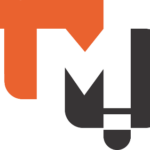Introduction
The case discusses virtual recruitment and its potential in the business world to bring out more competitive workers to the job market. Every system and technology can be evaluated for the potential pros and cons, these assessment can lead to the understanding if technology can be applied to the business community as strong business case that would impact business functions positively. The present report will assess the virtual recruitment systems by evaluating the outcomes of the system in various organizations by analyzing the case study. This report will represent a succinct view of application of virtual recruitment as a business case for SME’s and Corporations alike.
Answer to the Question
Question 1
What do you think are the prime advantages and disadvantages of “virtual tryouts”?
Prime Advantages
According to Armstrong and Taylor (2014) The human resource has been recognized as one of the most critical resource in defining the business outcomes and enabling it to sustain growth. Hence investments that benefits the productivity of organization by improving human resource than it is always worth it. . KeyBank says that by using virtual testing tools, it realized savings of more than $1.75 million per year due to lower turnover. The virtual systems will have far reaching positive implications for a business as are defined in the case. They system will provide better-qualified candidates, faster process for recruiting and lower turnover among hired employees. Candidates better understand the job and are more cognizant of their job descriptions.
Disadvantages
The system is very expensive and can result in excessive cost and operational expenses then actual tangible benefits. HR experts indicate that employers should take into account that they are not just purchasing a fancy product but rather should focus on the real thing. Hence this system can reduce the impact of candidate’s actual traits that are vital for the job. Hence the system needs to be fully evaluated.
Question 2
2. Do you think there would be any EEO concerns regarding this system?
Equal Employment Opportunity
Yes, according to me this system will have an impact on the equal employment opportunity since some organization might hire solely on the basis of virtual tryouts rather than integrating virtual tryouts with the conventional hiring methods. Moreover, performance of disabled candidates and cross gender performance can vary significantly. Furthermore, every employee is not economically sound to ensure their familiarity with the system and can lead to unjustified advantage to those who are. Henceforth virtual tryouts can blind a recruiter of their responsibility for ensuring EEO leading towards issues. There is a potential for EEO concerns where as, organizations will have to design a mechanism supporting virtual tryouts to ensure compliance with EEO values.
Question 3
3. Do you think virtual job tryouts might be better suited for some jobs than others? If so, which ones?
Virtual Tryouts and Jobs
Virtual tryouts are better suited for the jobs that involve teleworking and in order to give physical tests candidates have to incur lots of expense then virtual tryouts are best serving. The virtual tryouts are also very handy for the job at operational level since these processes allow recruiters to see the ability of a worker in different situations. Creativity and Innovativeness requires strategic outlook and virtual tryouts can be limiting the creativity, since one cannot truly know if in virtual tryout candidate was acting on its own will. So to hire a creative problem solving employee time bound and virtual testing is not effective. Virtual tryouts are hence good for teleworking jobs, IT jobs, customer services, sales and marketing but are not effective when an organization is hiring for strategic positions.
Enclosing
Virtual tryouts are effective and have a great potential for the organizations where they can utilize to gain cost advantage and extend their competitive advantage by having the right man to do the job. The system has its downside and business will have to tailor the system to comply with standards and offer candidates with an equal opportunity. Virtual tryout systems are expensive and organizations with vast and formal structure of operations can benefit from these systems as they can make familiar the candidate with organizational culture and can test them particularly against the specific job description in light of job specification.
Recommendation
In my opinion every system has its pros and cons and nothing can be termed absolutely perfect. When considering a strategic opportunity in terms of technology there are some options like to adopt it, adapt it, or completely re-modify it to suite specific strategic objectives and long-term goals. Virtual tryouts have a great potential for organizations to strategically align their human resource and make the process productive and beneficial for the organization from the start. Though this system has certain loopholes like it can hinder deliverance EEO and can be very expensive to a point of no value for small organizations then again the system can be tailored to organizational needs and wants.
Specialized organization offering outsourcing for these activities can ensure productivity and can meet specific organization needs while mitigating the financial risks. Moreover generally its cons are easily addressable and business can effectively deal with them by innovating and developing support activities. According to my analysis, virtual tryouts should be considered as a method to achieve excellence in human resource and should be tailored to meet the needs and to maintain compliance with organizational values.
The supportive culture and defined ethical code of conduct can be very handy in ensure the system will maintain high integrity while delivering the designed objectives.
References
Armstrong, M., & Taylor, S. X. (2014). Armstrong’s handbook of human resource management practice: Kogan Page Publishers.

